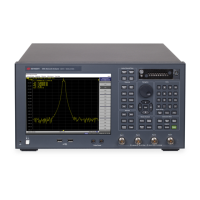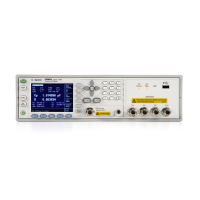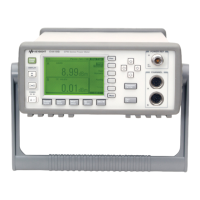Programming
1111
If the bit of the service request enable register is "1," a service request
(SRQ) is generated by the positive transition of the corresponding status
byte register bit. By generating SRQ, you can notify the controller that the
E5071C is requesting service. In other words, interruption by SRQ can be
programmed. For more information on using SRQ, see Using the status
register or Using the status reporting system.
Event Register
Reflects the corresponding condition of the E5071C (e.g., occurrence of an
event) as a bit status. These bits continuously monitor changes in the
E5071C's state and change the bit status when the condition (e.g., change
bit status to "1" if a specific event occurs) for each bit is met. You cannot
change the bit status by issuing a SCPI command.
Enable Register
Setting the enable register allows you to specify event register bits that
can set "1" to the summary bit of the status byte register when an event
occurs. The register bits work as mask bits; setting "1" to an enable
register will enable a corresponding bit in the event register.
For example, when you want to set "1" as the summary bit in the status
byte register by a specific register condition, set the corresponding enable
register to "1."
Status Byte Register
If the enabled event register is set to "1," a corresponding bit of the status
byte register is also set to "1." This register also indicates the output
queue and SRQ status.
The value of the status byte register can be read by using the *STB?
command or serial poll (SPOLL statement in HTBasic) from the controller.
Reading the status byte register by using the *STB? command does not
affect the contents of the status byte register. However, reading it with the
SPOLL statement of HTBasic will clear the RQS bit in the status byte
register.
Also, setting the service request enable register using the *SRE command
can generate a service request synchronously with the status byte register.
Condition Register and Transition Filter
When the status register has a transition filter, there is a lower register
called a condition register under the event register. The transition filter is
between the event register and the condition register.
The transition filter enables you to select a positive and/or negative
transition of the condition register bit in order to set a bit in the
corresponding event register. For example, using the negative transition
filter to set bit 3 to "1" causes bit 3 of the event register to be set to "1"

